Want to buy or sell something? Check the classifieds
-
The Fedora Lounge is supported in part by commission earning affiliate links sitewide. Please support us by using them. You may learn more here.
You are using an out of date browser. It may not display this or other websites correctly.
You should upgrade or use an alternative browser.
You should upgrade or use an alternative browser.
Berets, Anyone?
- Thread starter NonEntity
- Start date
Featured products
-
 John Lofgren Monkey Boots Shinki Horsebuttt - $1,136 The classic monkey boot silhouette in an incredibly rich Shinki russet horse leather.
John Lofgren Monkey Boots Shinki Horsebuttt - $1,136 The classic monkey boot silhouette in an incredibly rich Shinki russet horse leather. -
 Grant Stone Diesel Boot Dark Olive Chromexcel - $395 Goodyear welted, Horween Chromexcel, classic good looks.
Grant Stone Diesel Boot Dark Olive Chromexcel - $395 Goodyear welted, Horween Chromexcel, classic good looks. -
 Schott 568 Vandals Jacket - $1,250 The classic Perfecto motorcycle jacket, in a very special limited-edition Schott double rider style.
Schott 568 Vandals Jacket - $1,250 The classic Perfecto motorcycle jacket, in a very special limited-edition Schott double rider style.
Did you get one with or without a leather headband?
For the reply a blues and coffee hit.
http://youtu.be/AlSlLskfxYs
For the reply a blues and coffee hit.
http://youtu.be/AlSlLskfxYs
Last edited:
Did you get one with or without a leather headband?...
Two -- both without headband.
...For the reply a blues and coffee hit...
Thanks! :coffee: ...Sounds like Otis Rush -or- maybe a little like J.B. Hutto and His Hawks?!:music:
Kreissaege
One of the Regulars
- Messages
- 214
Ok. I was leaning towards without as well, I liked the easier fitting. Does anyone have the 150 Elósegui Edición Limitada? How does t compare to a super lujo?
The Super Lujo´s wool ist thicker, the whole beret much stiffer.
150 anos is not so warm.
The really big ones are only available as Super Lujo.
Kreissaege
One of the Regulars
- Messages
- 214
I can say that the "150" is the best beret I have ever owned -- bar none! (And I own 'em all!)eace:
...Although I am eagerly awaiting the release of the new "top contender" as seen in Post #765 of this thread.
I am interested, too.
Up until now, my spanish 150 anos and Super Lujo beat the french ones ( chasseur tartes, dress and field version) in every aspect:
denser wool, not so sloppy, fit all heads (the french dont even get the sizes right)
Daan
Vendor
- Messages
- 952
- Location
- Wellington, Aotearoa
Wow, returning from a 3 week holiday it's great to see how much has happened on this thread! It just confirms how alive the beret really is; I see that in the growth of South Pacific Berets, the enthusiasm of visitors of The Beret Project, but more than all in recent French developments. As mentioned in post 765, there is the brand new label of Boneteria Auloronesa (but more fantastic news to follow soon!).
As for the Boneteria Auloronesa berets: at the time of writing this, the last part of my first order is being manufactured in Oloron Sainte Marie. If all goes to plan, these berets in a wide variety of sizes, diameters, with and without headband, carrying the label with the red, blue-horned Béarnaise cows will be shipped in another 10 days and should be available by mid-February (La Poste and NZ Customs willing...).

Going through the posts on this thread over the last three weeks, a few themes were very present: 'diameters' and 'with or without headband'. Needless to say, I have an opinion on these matters. As for diameters of berets, and protection from the sun or light in your eyes, it's really simple: the larger the better. The gauchos from Argentina and Uruguay lead by example: very large berets, pulled forward to shade the eyes or backwards to prevent sunburn of the neck.
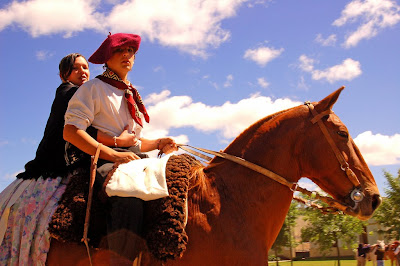

Of course, an overdose of sunlight generally goes together with high temperatures. Therefore, the Argentinian plato grandes are made in cotton or in the lighter density merino wool. Actually, I have just received a small number of custom made boinas Tolosa Tupida without headband in 32cm, presently in the One-Offs Section.
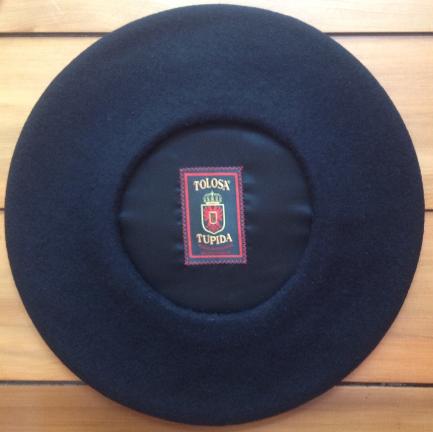
As for the choice between berets with or without headband - that's a never ending discussion. Objectively, I can't think of any reason why you would choose a beret with headband, but then, many customers do (and I have to confess, there are some banded berets that i very much enjoy wearing).
The headband-less beret really is the original beret; it wasn't until the mid 1920' that all berets were headband-less. The pro's of a headband-less (or "free-size", one-size") beret are plenty: the wool rim stretches to the individual wearer's head size and shape, providing an always comfortable fit, it doesn't leave a sweaty imprint on the forehead; it easily rolls up to fit in your pocket; provides excellent moist absorption and of course, no cracked, stiff or brittle headband.
Why do people choose to wear a beret with headband then? Partly tradition, partly personal liking - and some headbands are much more comfortable than others.
The Auloronese beret for example has an extremely soft and pleasant headband, and the Japanese DEER Basque has a comfortable elastic band fitted. But really, it all comes down to personal preference.
As for the Boneteria Auloronesa berets: at the time of writing this, the last part of my first order is being manufactured in Oloron Sainte Marie. If all goes to plan, these berets in a wide variety of sizes, diameters, with and without headband, carrying the label with the red, blue-horned Béarnaise cows will be shipped in another 10 days and should be available by mid-February (La Poste and NZ Customs willing...).

Going through the posts on this thread over the last three weeks, a few themes were very present: 'diameters' and 'with or without headband'. Needless to say, I have an opinion on these matters. As for diameters of berets, and protection from the sun or light in your eyes, it's really simple: the larger the better. The gauchos from Argentina and Uruguay lead by example: very large berets, pulled forward to shade the eyes or backwards to prevent sunburn of the neck.


Of course, an overdose of sunlight generally goes together with high temperatures. Therefore, the Argentinian plato grandes are made in cotton or in the lighter density merino wool. Actually, I have just received a small number of custom made boinas Tolosa Tupida without headband in 32cm, presently in the One-Offs Section.
As for the choice between berets with or without headband - that's a never ending discussion. Objectively, I can't think of any reason why you would choose a beret with headband, but then, many customers do (and I have to confess, there are some banded berets that i very much enjoy wearing).
The headband-less beret really is the original beret; it wasn't until the mid 1920' that all berets were headband-less. The pro's of a headband-less (or "free-size", one-size") beret are plenty: the wool rim stretches to the individual wearer's head size and shape, providing an always comfortable fit, it doesn't leave a sweaty imprint on the forehead; it easily rolls up to fit in your pocket; provides excellent moist absorption and of course, no cracked, stiff or brittle headband.
Why do people choose to wear a beret with headband then? Partly tradition, partly personal liking - and some headbands are much more comfortable than others.
The Auloronese beret for example has an extremely soft and pleasant headband, and the Japanese DEER Basque has a comfortable elastic band fitted. But really, it all comes down to personal preference.
Daan
Vendor
- Messages
- 952
- Location
- Wellington, Aotearoa
The Super Lujo´s wool ist thicker, the whole beret much stiffer.
150 anos is not so warm.
The really big ones are only available as Super Lujo.
Hi Kreissaege, good to see you here again! Interesting observation regarding warmth of the Limited Edition, but allow me to disagree with you: although the Limited edition is lighter in weight, the quality of the 17 micron Australian merino wool fibers provide much better insulation than the "standard" merino wool used in the Super Lujo models. Similar to, for example, the merino clothing by Icebreaker, the density and weight are not relevant to it's insulation capacity.
Apart from the winter version Tarte, I can't think of a warmer beret than the Limited Edition (and at the same time, very wearable in hot summer weather).
Daan
Vendor
- Messages
- 952
- Location
- Wellington, Aotearoa
Hello,
Does anyone happen to have a headshot wearing a Algodon Plato Grande? It's summer here in Oz and a cotton beret would I think do the trick.
Absolutely! Those days that I really need some protection on the beach, right under that hole in the ozon layer here in NZ, I wear my navy cotton Plato Grande:
Otherwise, the 31cm diameter does a pretty good job too:
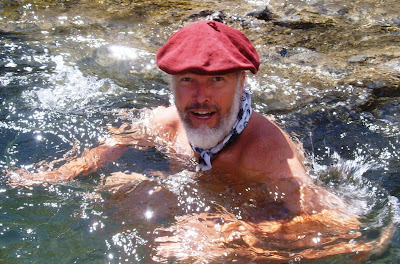
Daan
Vendor
- Messages
- 952
- Location
- Wellington, Aotearoa
Thanks Daan, The Grande it is, all I have to do now is decide between the green and the cream.
And since yesterday, there are actually four more colours to choose from: "Broken white", "Textured Salmon", "Lime-Green" and "Havana-Brown". An experiment, see what people like, so only a limited supply in each colour. All in a 310mm diameter.
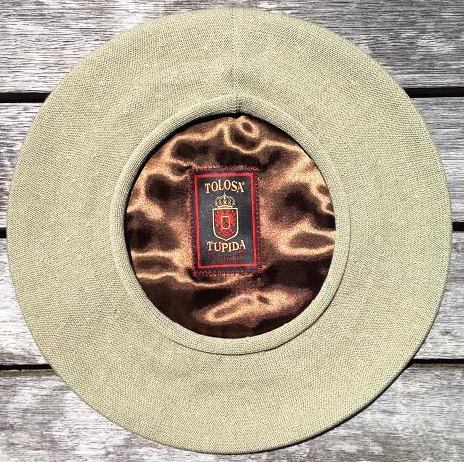
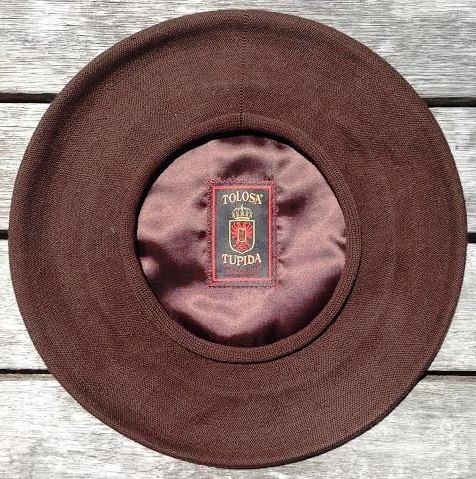
Kreissaege
One of the Regulars
- Messages
- 214
Hi Kreissaege, good to see you here again! Interesting observation regarding warmth of the Limited Edition, but allow me to disagree with you: although the Limited edition is lighter in weight, the quality of the 17 micron Australian merino wool fibers provide much better insulation than the "standard" merino wool used in the Super Lujo models.
Hello Daan
I take your word for it, because if it really gets cold, I wont wear either. Ears and neck need the protection of a woolen cap.
To add to the way these berets "feel" on the head, 150 anos is softer to the skin, so sebsitive people might prefer it. Tthe stiffnes of the Super Lujo makes it IMO preferable in the really big diameters, as they are less floppy.
The Tolosa Tupida in 32cm is good news, as they are more comfortable to wear when its warmer, beating even the Boinas Elosegui Exposicion Fina in this aspect. Even though I swore myself not to buy another beret, I did just this the very moment.
Daan
Vendor
- Messages
- 952
- Location
- Wellington, Aotearoa
Le Béret Français
As mentioned in posts 765 and 799, there is the brand new label of Boneteria Auloronesa; a first order I expect to be shipped from France later this week - available from mid-February through South Pacific Berets.
Not many, and certainly not me, envisioned the birth of yet another new beret manufacturer in the French Béarn. Alas, that is exactly what happened: Le Béret Français was set up by three former BEATEX employees, worried about the future of "real" French made berets.
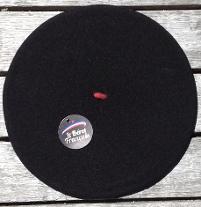
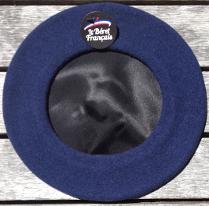

All materials and pieces are conceived, designed and produced exclusively in France. The beret collection is produced in Laàs, a charming little village in the Béarn.
But there is more to the story: Le Béret Français only makes the traditional Béarnaise beret, that is strictly without headbands (berets with headband were only introduced in the 1920's). Trademark of Le Béret Français is the cabillou, or txortena, in red.
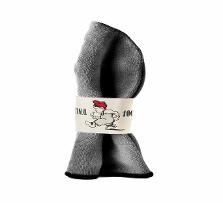

South Pacific Berets have just received their first shipment of these lovely berets (and I believe to be the only retailer outside France). Take a look here.
Available in a range of colours, all in a 10 pouces/28cm diameter.
As mentioned in posts 765 and 799, there is the brand new label of Boneteria Auloronesa; a first order I expect to be shipped from France later this week - available from mid-February through South Pacific Berets.
Not many, and certainly not me, envisioned the birth of yet another new beret manufacturer in the French Béarn. Alas, that is exactly what happened: Le Béret Français was set up by three former BEATEX employees, worried about the future of "real" French made berets.
All materials and pieces are conceived, designed and produced exclusively in France. The beret collection is produced in Laàs, a charming little village in the Béarn.
But there is more to the story: Le Béret Français only makes the traditional Béarnaise beret, that is strictly without headbands (berets with headband were only introduced in the 1920's). Trademark of Le Béret Français is the cabillou, or txortena, in red.


South Pacific Berets have just received their first shipment of these lovely berets (and I believe to be the only retailer outside France). Take a look here.
Available in a range of colours, all in a 10 pouces/28cm diameter.
Inkstains
New in Town
- Messages
- 12
- Location
- Potomac Maryland
Looking at Dann’s great website, it appears many chaps wear their berets more or less all day, adding character to them as they go along.
So how long do they endure, meaning the berets not the wearers? I’m thinking of those traditional berets without headbands, in which wool meets flesh.
I seem to recall reading that one doesn’t wash the felt. So what gives with the inevitable accumulation of sweat, grime, oils etc. from one’s forehead? This becomes an excuse for new beret each year or so? Grab and toothbrush and Woolite, shhhh? Or, never mind – nobody should be looking inside your beret to begin with.
I’m guessing from my Panama hat days that this is one reason behind headbands. Google seems to support that point of view with its registry of a half-dozen U.S. hat/sweatband patent applications, including one in 1902 from Charles Levi Johnson. A partial quote, which can be read to bear upon my question above:
“My invention relates to sweat-bands for hats and caps; and my object is to obtain as a new article of manufacture a sweat-band made of a non-absorbent material and so attached to the brim of the hat as to afford ample ventilation for the head.
“The comforts and healthful benefits of a ventilated hat have long ago become well known; but the material from which the sweat-band was made has not heretofore had the attention which it requires. If constructed of absorbent material, it soon becomes impregnated with the perspiration and excrement of the scalp, giving to the sweat-band an unclean ofiensive (sic) appearance and rendering the hat unfit for use from a hygienic point of view until the old soiled sweat-band has been removed and replaced by a clean one.”
So how long do they endure, meaning the berets not the wearers? I’m thinking of those traditional berets without headbands, in which wool meets flesh.
I seem to recall reading that one doesn’t wash the felt. So what gives with the inevitable accumulation of sweat, grime, oils etc. from one’s forehead? This becomes an excuse for new beret each year or so? Grab and toothbrush and Woolite, shhhh? Or, never mind – nobody should be looking inside your beret to begin with.
I’m guessing from my Panama hat days that this is one reason behind headbands. Google seems to support that point of view with its registry of a half-dozen U.S. hat/sweatband patent applications, including one in 1902 from Charles Levi Johnson. A partial quote, which can be read to bear upon my question above:
“My invention relates to sweat-bands for hats and caps; and my object is to obtain as a new article of manufacture a sweat-band made of a non-absorbent material and so attached to the brim of the hat as to afford ample ventilation for the head.
“The comforts and healthful benefits of a ventilated hat have long ago become well known; but the material from which the sweat-band was made has not heretofore had the attention which it requires. If constructed of absorbent material, it soon becomes impregnated with the perspiration and excrement of the scalp, giving to the sweat-band an unclean ofiensive (sic) appearance and rendering the hat unfit for use from a hygienic point of view until the old soiled sweat-band has been removed and replaced by a clean one.”
Daan
Vendor
- Messages
- 952
- Location
- Wellington, Aotearoa
Looking at Dann’s great website, it appears many chaps wear their berets more or less all day, adding character to them as they go along.
So how long do they endure, meaning the berets not the wearers? I’m thinking of those traditional berets without headbands, in which wool meets flesh.
I seem to recall reading that one doesn’t wash the felt. So what gives with the inevitable accumulation of sweat, grime, oils etc. from one’s forehead? This becomes an excuse for new beret each year or so? Grab and toothbrush and Woolite, shhhh? Or, never mind – nobody should be looking inside your beret to begin with.
I’m guessing from my Panama hat days that this is one reason behind headbands. Google seems to support that point of view with its registry of a half-dozen U.S. hat/sweatband patent applications, including one in 1902 from Charles Levi Johnson. A partial quote, which can be read to bear upon my question above:
“My invention relates to sweat-bands for hats and caps; and my object is to obtain as a new article of manufacture a sweat-band made of a non-absorbent material and so attached to the brim of the hat as to afford ample ventilation for the head.
“The comforts and healthful benefits of a ventilated hat have long ago become well known; but the material from which the sweat-band was made has not heretofore had the attention which it requires. If constructed of absorbent material, it soon becomes impregnated with the perspiration and excrement of the scalp, giving to the sweat-band an unclean ofiensive (sic) appearance and rendering the hat unfit for use from a hygienic point of view until the old soiled sweat-band has been removed and replaced by a clean one.”
Interesting quotes, Inkstains. In my opinion, the last and second to last quotes are the perfect reasoning for a headband-less beret! My personal preference goes to berets without headband, but if wearing a banded beret, I can't think of anything more uncomfortable than a band made of non-absorbent material. I recall the awful itch of accumulating perspiration that has nowhere to go between the forehead and the headband. One takes the beret off and a bright red, wet imprint remains on the forehead.
The alternative is a (good) leather headband (like the calf leather of the Edicion Limitada, Laulhere's berets or Bonigors Moroccan leather), but indeed, many berets are fitted with non- or poorly absorbent headbands.
Frequently customers ask me about washing, or cleaning their beret (interesting observation [not a judgment]: always Americans and Germans) and my answer is always to not wash the beret, but if need be, only spot-clean with a warm damp cloth (a mild wool detergent can be added). The thing is that practically all berets are made of high quality merino wool and the great thing of these merino fibres is that they don't hold any odours.
Over the last decade, NZ outdoors clothing brand Icebreaker used this very feature of merino wool for their marketing campaigns; "one can easily go on a week's tramp and not change your T-shirt - it won't smell"! It's true.
The same is valid for berets - despite my practically non-stop wearing a headband-less beret, it doesn't get smelly.
Cotton berets are a different story. I have washed mine in cold water, with mild wool detergent, but it is hard to prevent any shrinking. if washing a cotton beret, it's best to take care about the drying: place a dinner plate of the same diameter inside the wet beret and let in dry flat in a well ventilated area outside direct sunlight.
Last, nothing to do with hygiene, but as important non the less, is that berets with headband are often too tight or you risk it being blown off - a rather embarrassing situation that I know all too well. Many headbanded berets have a 'brake' to prevent this (the ribbon sewed on the band), but still, living in a place like Wellington, the best guarantee against becoming the public clown is a well fitting headband-less beret!
Inkstains
New in Town
- Messages
- 12
- Location
- Potomac Maryland
Daan (excuse my earlier misspelling): Thank you for the informative, convincing and entertaining reply. And fair point about it being an American, of course, to raise such a question. Caught.
I'm still curious about the berets in some of these great photos you post. I know how long it takes those fellows to get faces as wrinkled as dried apples. But how long do you suppose those beat-up, character-rich berets have been with them?
Cheers
I'm still curious about the berets in some of these great photos you post. I know how long it takes those fellows to get faces as wrinkled as dried apples. But how long do you suppose those beat-up, character-rich berets have been with them?
Cheers
Daan
Vendor
- Messages
- 952
- Location
- Wellington, Aotearoa
Daan (excuse my earlier misspelling): Thank you for the informative, convincing and entertaining reply. And fair point about it being an American, of course, to raise such a question. Caught.
I'm still curious about the berets in some of these great photos you post. I know how long it takes those fellows to get faces as wrinkled as dried apples. But how long do you suppose those beat-up, character-rich berets have been with them?
Cheers
Hi Inkstains,
Of course, I can only guess at the age of some of these berets, but I know of one that was actually worn for well over 50 years. A couple of months ago, I received a request from a woman in the US to find a replacement for her grandfather's beret. He still wore his original beret, brought with him from France in the late 1960's and wanted something resembling it as close as possible. When I received the requested picture, I recognised it as a Bakarra with bayadere lining, made before the 1960's. He never wore anything else... (she replaced it with a Laulhere Bayadere 9.5p).
I didn't ask for a picture of the owner, so no details about the character of his face, but his old (holey and broken headbanded) beret sure had plenty of character!
hatguy1
One Too Many
- Messages
- 1,145
- Location
- Da Pairee of da prairee
Uh...no, thank you .
Sent from my iPhone using Tapatalk
Sent from my iPhone using Tapatalk
andrealed
New in Town
- Messages
- 1
- Location
- Genoa, Italy
Genoa and berets
Hi, this is my first post: I am genoese and I am a beret wearer. I am glad to give you some informations about berets in Genoa (and Italy). In Genoa berets are always been the working class hat, just as flat caps in England (and together with flat caps, they both were used by genoese because they both are more or less the same hat, with the same pros and cons). Today only old men are wearing them as a everyday hat. From the seventies and the eighties less and less men wore hats. Hats were going out of fashion and so berets wearing has become a thing from the past too. But old men (and not so old, I'm in my forties) are still wearing berets as ordinary hats.
Beret also have in Genoa a precise nickname, they are called "baciccia" (batcheetcha) (id est the contraction of Giovanni Battista in genoese dialect, the most usual name of genoeses, as San Giovanni Battista is the patron of Genoa ); because the usual wearer was a docker. The baciccia is the smaller diameter beret, by the way, not the large one, and it's always navy; black beret were a thing for priests.
I think most men till the sixties (in western world) used to "grease" their hair with pomade not to have a messy look, to be perfectly combed but people working in dusty envirronmnent must protect their hair from dust, or at the end of the day they would have been not so fine looking.
With the seventies (hippy, flower power...) not more hair pomade, end of headgear.
My hat shop has always on display some kind of beret for the affectionate old men that still wear them in Genoa and in northern Italy.
As for Itlay a famous italian wearer was Pietro Nenni, the leader of the Socialist Party from post war to the seventies. Google for him and you will find nice pictures with his beret.
A famous wearer is the communist steel worker Cipputi in the daily comic strip on Unità and Repubblica. He wear a blue overall and a beret.
Bye from Genoa
Andrea
Hi, this is my first post: I am genoese and I am a beret wearer. I am glad to give you some informations about berets in Genoa (and Italy). In Genoa berets are always been the working class hat, just as flat caps in England (and together with flat caps, they both were used by genoese because they both are more or less the same hat, with the same pros and cons). Today only old men are wearing them as a everyday hat. From the seventies and the eighties less and less men wore hats. Hats were going out of fashion and so berets wearing has become a thing from the past too. But old men (and not so old, I'm in my forties) are still wearing berets as ordinary hats.
Beret also have in Genoa a precise nickname, they are called "baciccia" (batcheetcha) (id est the contraction of Giovanni Battista in genoese dialect, the most usual name of genoeses, as San Giovanni Battista is the patron of Genoa ); because the usual wearer was a docker. The baciccia is the smaller diameter beret, by the way, not the large one, and it's always navy; black beret were a thing for priests.
I think most men till the sixties (in western world) used to "grease" their hair with pomade not to have a messy look, to be perfectly combed but people working in dusty envirronmnent must protect their hair from dust, or at the end of the day they would have been not so fine looking.
With the seventies (hippy, flower power...) not more hair pomade, end of headgear.
My hat shop has always on display some kind of beret for the affectionate old men that still wear them in Genoa and in northern Italy.
As for Itlay a famous italian wearer was Pietro Nenni, the leader of the Socialist Party from post war to the seventies. Google for him and you will find nice pictures with his beret.
A famous wearer is the communist steel worker Cipputi in the daily comic strip on Unità and Repubblica. He wear a blue overall and a beret.
Bye from Genoa
Andrea
I have regularly mentioned the Basco Roma here on the Fedora Lounge, to me one of the most comfortable berets ever! From literature and personal anecdotes, I know it really was the "popular workers hat", as it if called in Italian (or "Basco Popolare Operaio Uomo"), but so far found it hard to find good evidence of it, apart from a few photographs here and there.
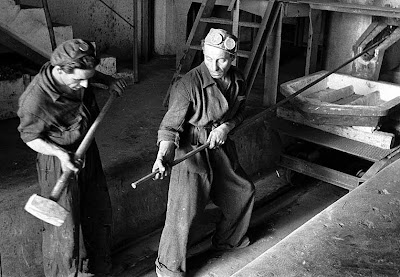
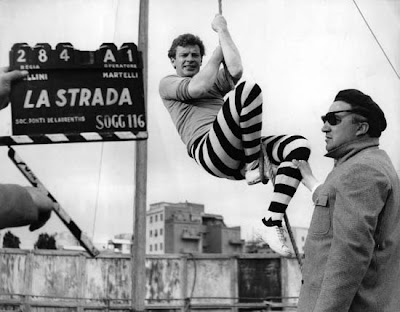

Last weekend I watched the movie "The Wolf's Mouth", (or "La Bocca del Lupo"), a 2009 biographical drama/documentary film written and directed by Pietro Marcello. It premièred at the 2009 Torino Film Festival in Turin, and won the FIPRESCI Prize for 'Best Film'. It follows an Italian man named Vincenzo Motta (also known as Enzo) who is serving a long sentence in a Genoa prison. He meets and falls in love with a transsexual woman named Mary Monaco who promises to wait for Enzo when she gets out of prison. When she is released, Mary finds a home for them to share, but in the meantime, she becomes addicted to heroin. Between scenes, there are fragments of life in 1950's Genoa, a pretty grim, raw showing of industry and factory workers and, indeed, many of them wearing Basco Roma's!
[video=youtube;hYbcZ6rY_CM]http://www.youtube.com/watch?v=hYbcZ6rY_CM[/video]
Hard to get the right fragment through YouTube, but on this clip you'll see part of the scene (at 1:37).
Last edited:
Similar threads
- Replies
- 0
- Views
- 1K
Members online
- tweedydon
- Mothkok
- tonyb
- JackBroChill
- tomatocookie
- BarryMcCockiner_PhD
- AerGuitar
- mowgli222
- Kunja
- FindingSerenity
- rimon
- jkoj
- Craig from Craigslist
- Grayland
- Resonate
- RedBird
- Lou_FD14
- scottcw
- thebruin
- RickP
- Igneous629
- Santa
- LaymanX
- teacore_bug
- Simlam
- postman10mm
- Herrvallmo
- giangiobomber
- Will Zach
- jchance
- jrkirkwo
- tastyporkbuns
- Alabama Blacksmith
- quikrick
- Aladeen's magic carpet
Total: 4,682 (members: 46, guests: 4,636)